Characterization of a mitogen-activated protein kinase gene from cucumber required for trichoderma-conferred plant resistance
- PMID: 16950863
- PMCID: PMC1630744
- DOI: 10.1104/pp.106.082107
Characterization of a mitogen-activated protein kinase gene from cucumber required for trichoderma-conferred plant resistance
Abstract
The fungal biocontrol agent Trichoderma asperellum has been recently shown to induce systemic resistance in plants through a mechanism that employs jasmonic acid and ethylene signal transduction pathways. Mitogen-activated protein kinase (MAPK) proteins have been implicated in the signal transduction of a wide variety of plant stress responses. Here we report the identification and characterization of a Trichoderma-induced MAPK (TIPK) gene function in cucumber (Cucumis sativus). Similar to its homologs, wound-induced protein kinase, MPK3, and MPK3a, TIPK is also induced by wounding. Normally, preinoculation of roots with Trichoderma activates plant defense mechanisms, which result in resistance to the leaf pathogen Pseudomonas syringae pv lachrymans. We used a unique attenuated virus vector, Zucchini yellow mosaic virus (ZYMV-AGII), to overexpress TIPK protein and antisense (AS) RNA. Plants overexpressing TIPK were more resistant to pathogenic bacterial attack than control plants, even in the absence of Trichoderma preinoculation. On the other hand, plants expressing TIPK-AS revealed increased sensitivity to pathogen attack. Moreover, Trichoderma preinoculation could not protect these AS plants against subsequent pathogen attack. We therefore demonstrate that Trichoderma exerts its protective effect on plants through activation of the TIPK gene, a MAPK that is involved in signal transduction pathways of defense responses.
Figures
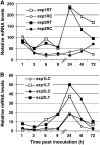
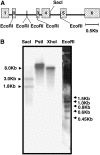

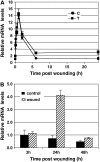
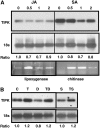


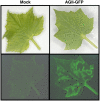


Similar articles
-
Trichoderma mitogen-activated protein kinase signaling is involved in induction of plant systemic resistance.Appl Environ Microbiol. 2005 Oct;71(10):6241-6. doi: 10.1128/AEM.71.10.6241-6246.2005. Appl Environ Microbiol. 2005. PMID: 16204544 Free PMC article.
-
Involvement of jasmonic acid, ethylene and salicylic acid signaling pathways behind the systemic resistance induced by Trichoderma longibrachiatum H9 in cucumber.BMC Genomics. 2019 Feb 18;20(1):144. doi: 10.1186/s12864-019-5513-8. BMC Genomics. 2019. PMID: 30777003 Free PMC article.
-
Involvement of Jasmonic Acid/Ethylene Signaling Pathway in the Systemic Resistance Induced in Cucumber by Trichoderma asperellum T203.Phytopathology. 2005 Jan;95(1):76-84. doi: 10.1094/PHYTO-95-0076. Phytopathology. 2005. PMID: 18943839
-
Genetic background of host-pathogen interaction between Cucumis sativus L. and Pseudomonas syringae pv. lachrymans.J Appl Genet. 2009;50(1):1-7. doi: 10.1007/BF03195645. J Appl Genet. 2009. PMID: 19193976 Review.
-
The contribution of Trichoderma to balancing the costs of plant growth and defense.Int Microbiol. 2013 Jun;16(2):69-80. doi: 10.2436/20.1501.01.181. Int Microbiol. 2013. PMID: 24400524 Review.
Cited by
-
Differential expression of maize chitinases in the presence or absence of Trichoderma harzianum strain T22 and indications of a novel exo- endo-heterodimeric chitinase activity.BMC Plant Biol. 2010 Jul 1;10:136. doi: 10.1186/1471-2229-10-136. BMC Plant Biol. 2010. PMID: 20594307 Free PMC article.
-
A mitogen-activated protein kinase gene, AhMPK3 of peanut: molecular cloning, genomic organization, and heterologous expression conferring resistance against Spodoptera litura in tobacco.Mol Genet Genomics. 2009 Jul;282(1):65-81. doi: 10.1007/s00438-009-0446-6. Epub 2009 Apr 8. Mol Genet Genomics. 2009. PMID: 19352711
-
The Function of MAPK Cascades in Response to Various Stresses in Horticultural Plants.Front Plant Sci. 2020 Jul 31;11:952. doi: 10.3389/fpls.2020.00952. eCollection 2020. Front Plant Sci. 2020. PMID: 32849671 Free PMC article. Review.
-
MAPK machinery in plants: recognition and response to different stresses through multiple signal transduction pathways.Plant Signal Behav. 2010 Nov;5(11):1370-8. doi: 10.4161/psb.5.11.13020. Epub 2010 Nov 1. Plant Signal Behav. 2010. PMID: 20980831 Free PMC article. Review.
-
Genome-wide identification of MAPK, MAPKK, and MAPKKK gene families and transcriptional profiling analysis during development and stress response in cucumber.BMC Genomics. 2015 May 15;16(1):386. doi: 10.1186/s12864-015-1621-2. BMC Genomics. 2015. PMID: 25976104 Free PMC article.
References
-
- Abeles FB, Morgan PW, Saltveit ME Jr (1992) Ethylene in Plant Biology, Ed 2. Academic Press, San Diego
-
- Aly R, Mansour F, Abo Much F, Edelstein M, Gal-On A (2005) A novel approach to spider mite control based on expression of sarcotoxin IA peptide via ZYMV-AGII vector in squash plants. Phytoparasitica 33: 177–186
-
- Asai T, Tena G, Plotnikova J, Willmann MR, Chiu WL, Gomez-Gomez L, Boller T, Ausubel FM, Sheen J (2002) MAP kinase signalling cascade in Arabidopsis innate immunity. Nature 415: 977–983 - PubMed
Publication types
MeSH terms
Substances
Associated data
- Actions
- Actions
LinkOut - more resources
Full Text Sources
Other Literature Sources
Research Materials

